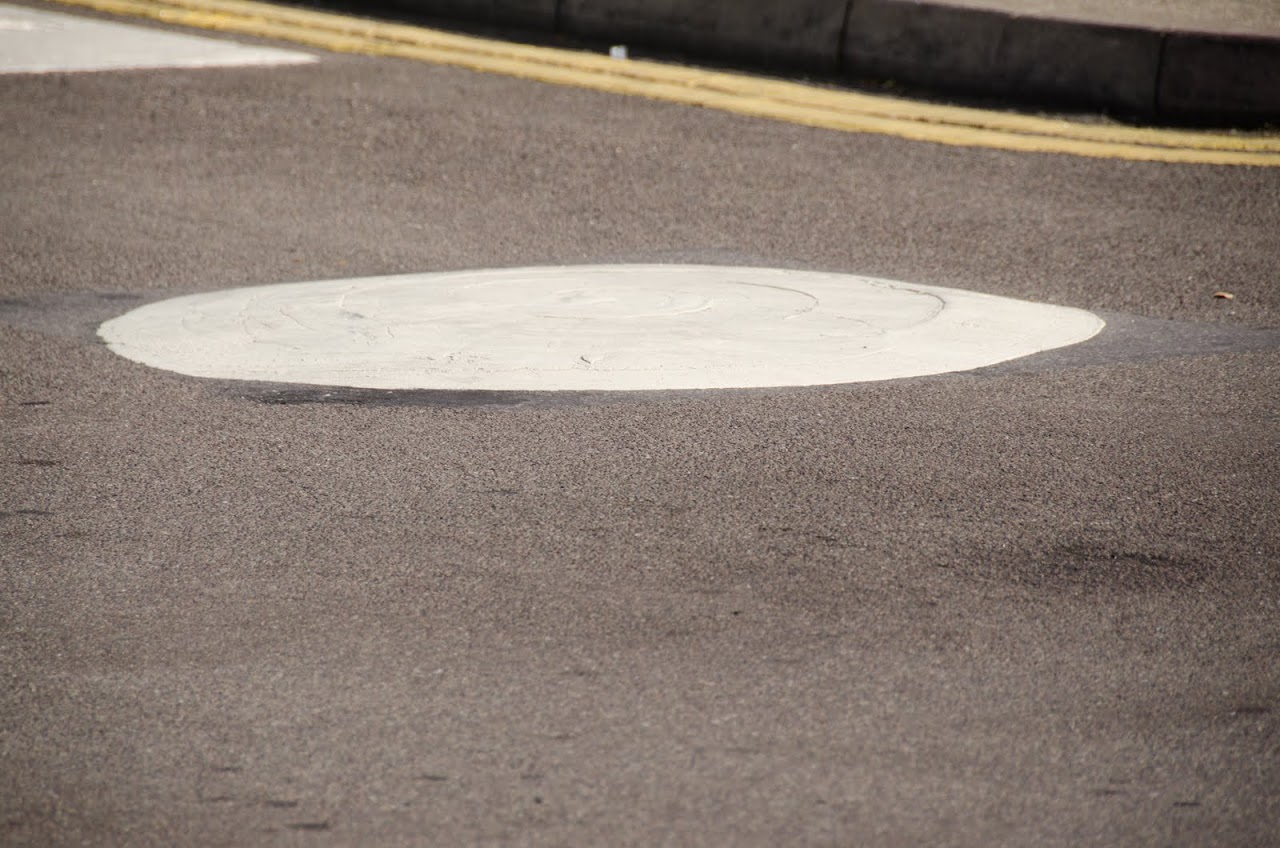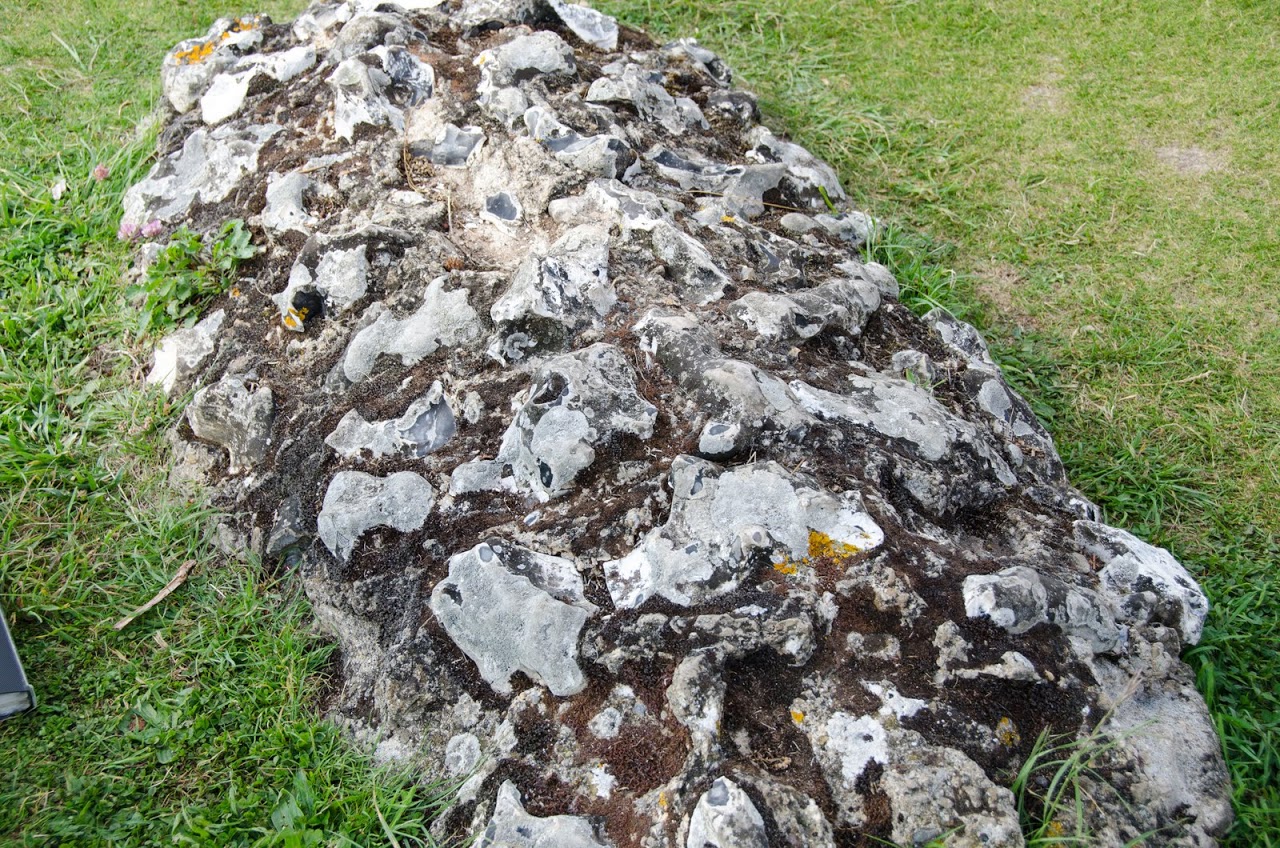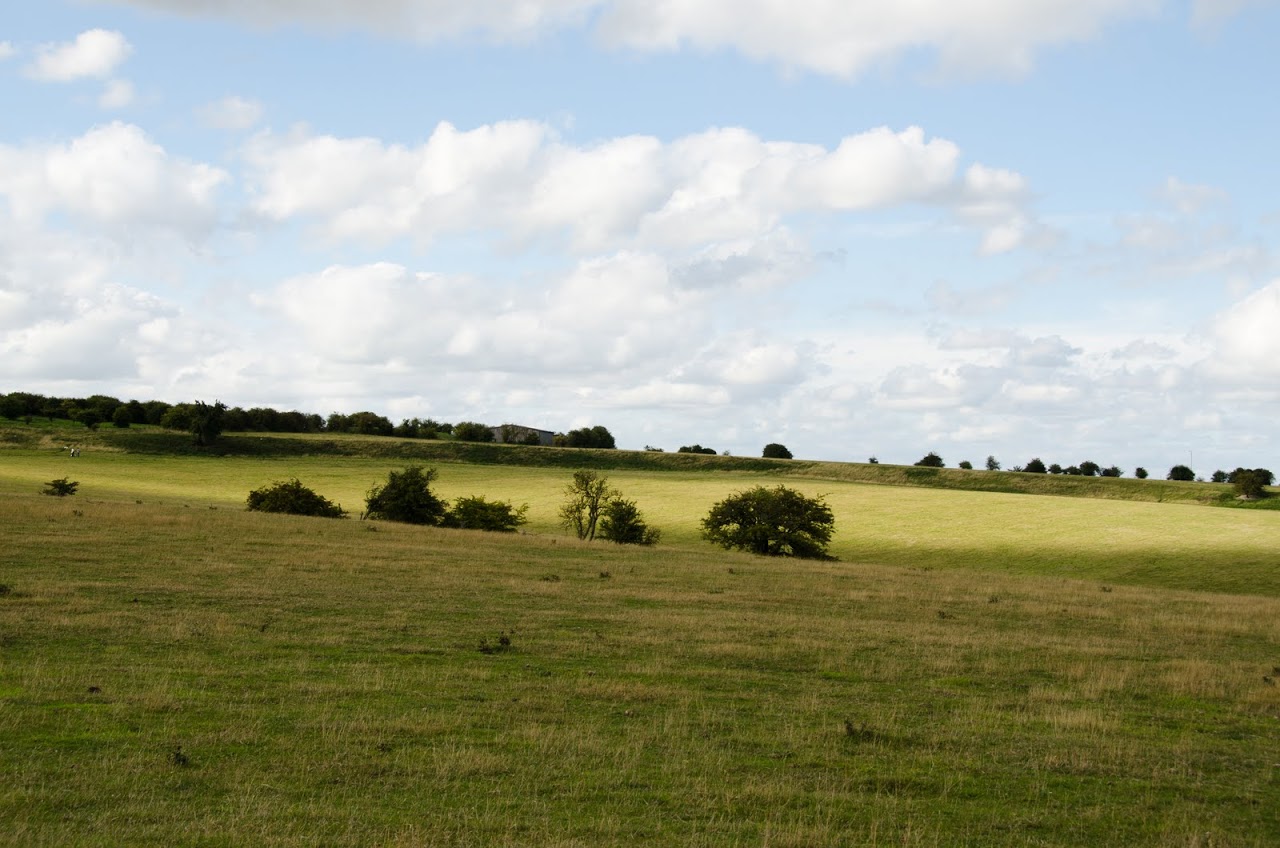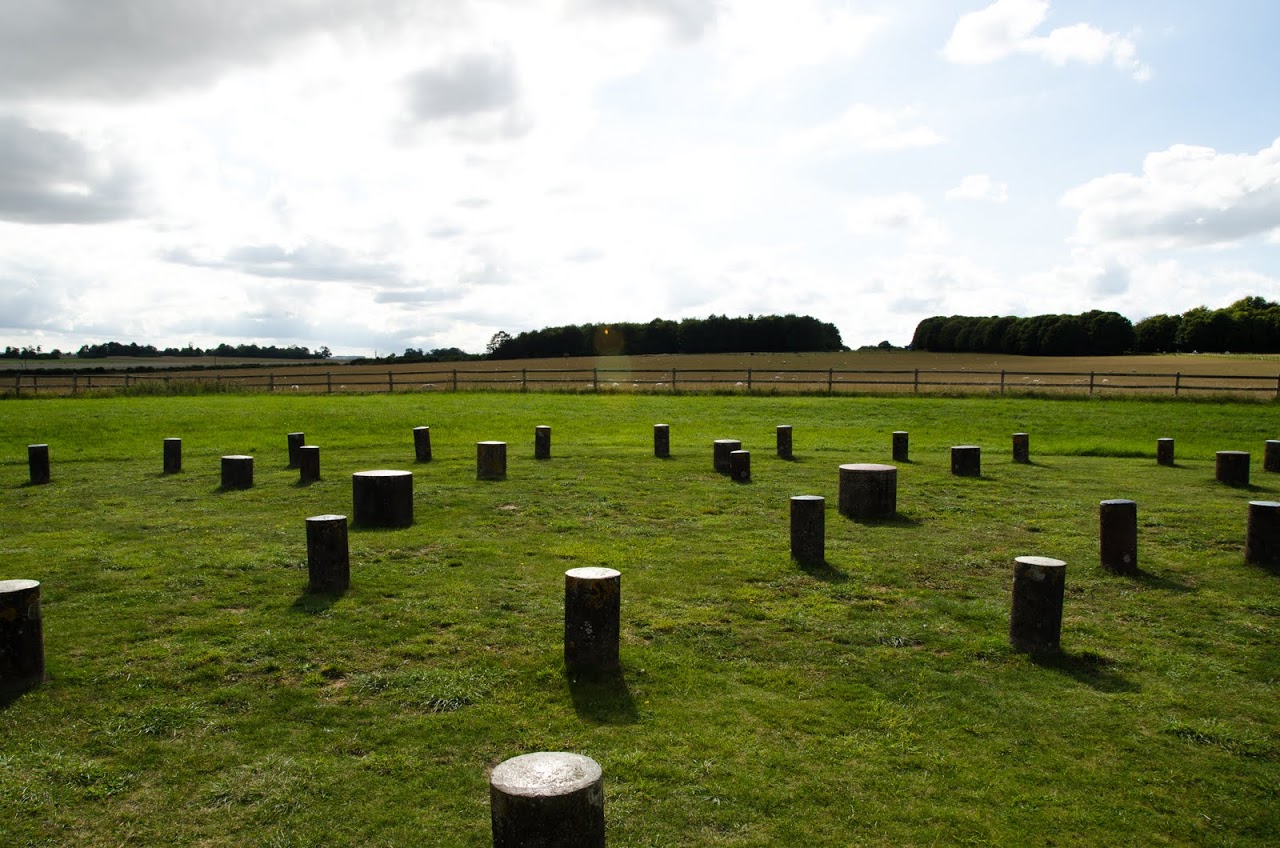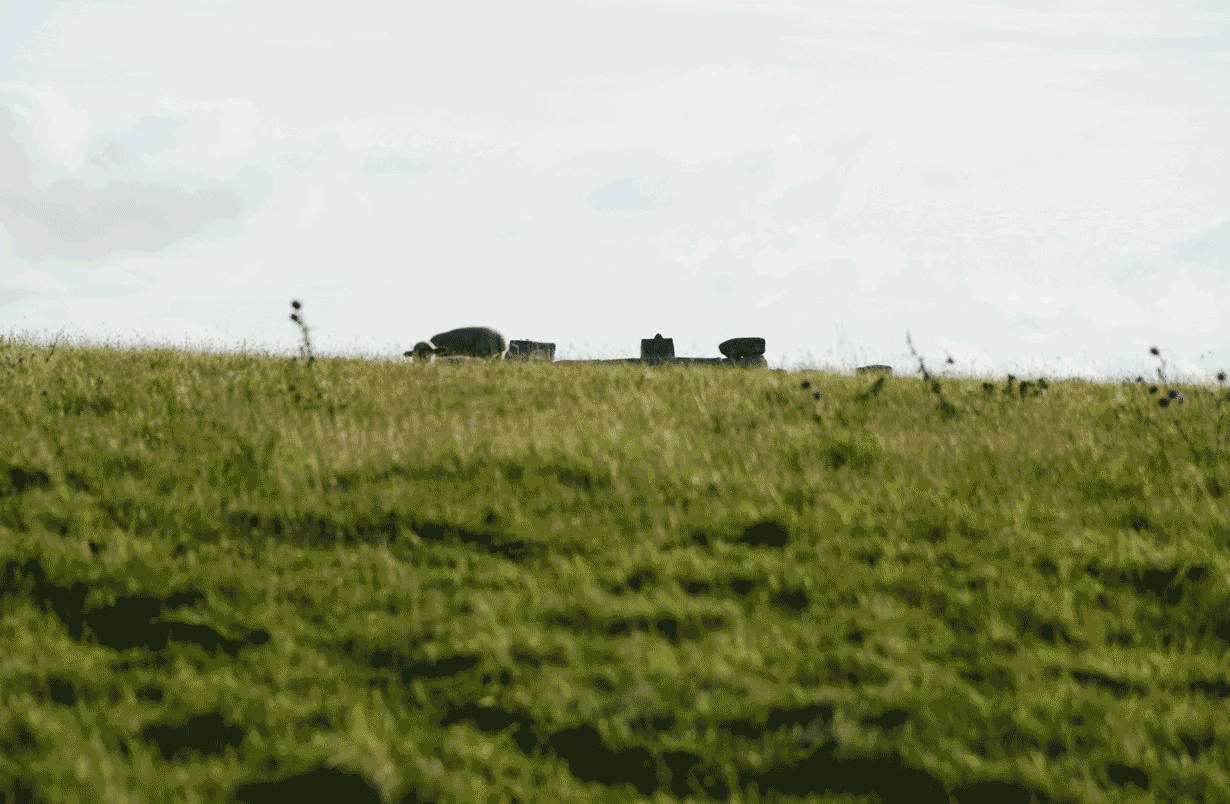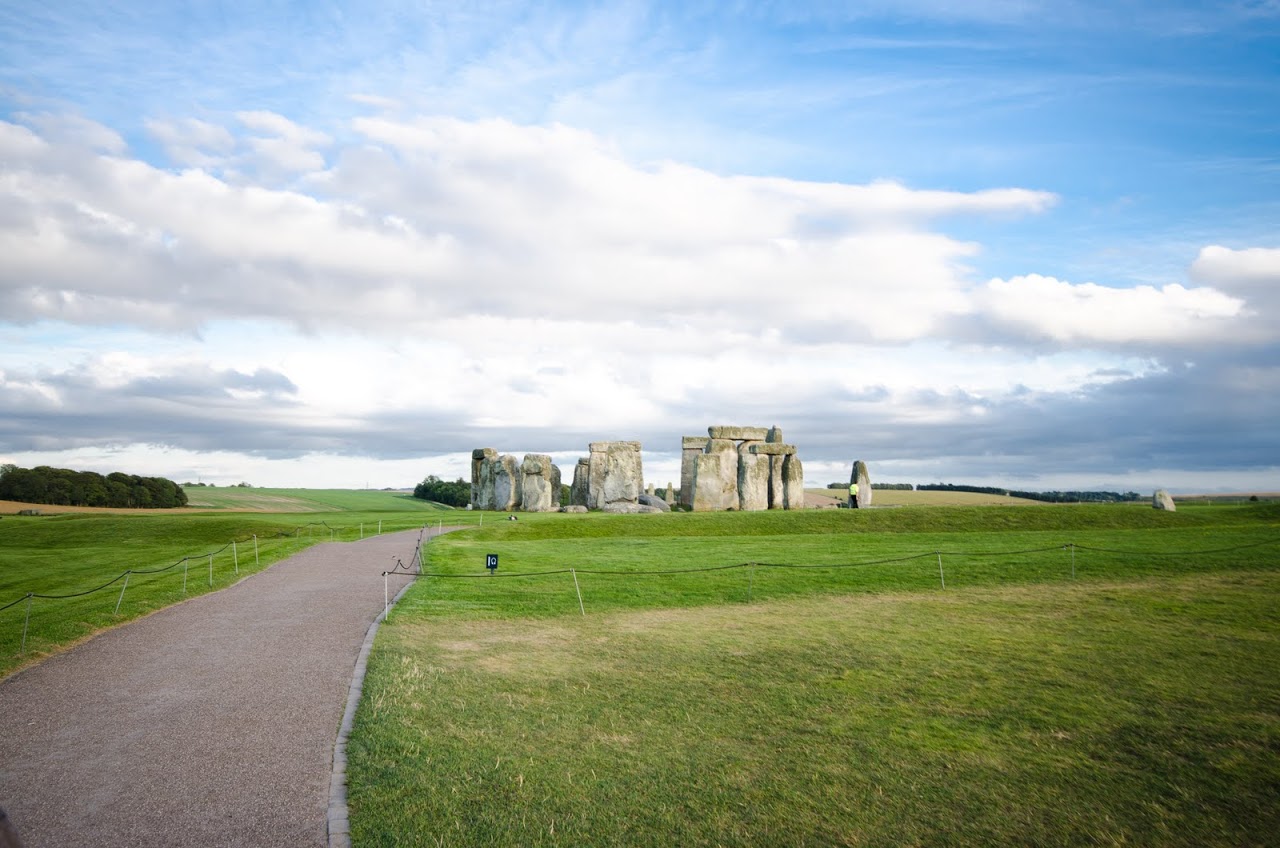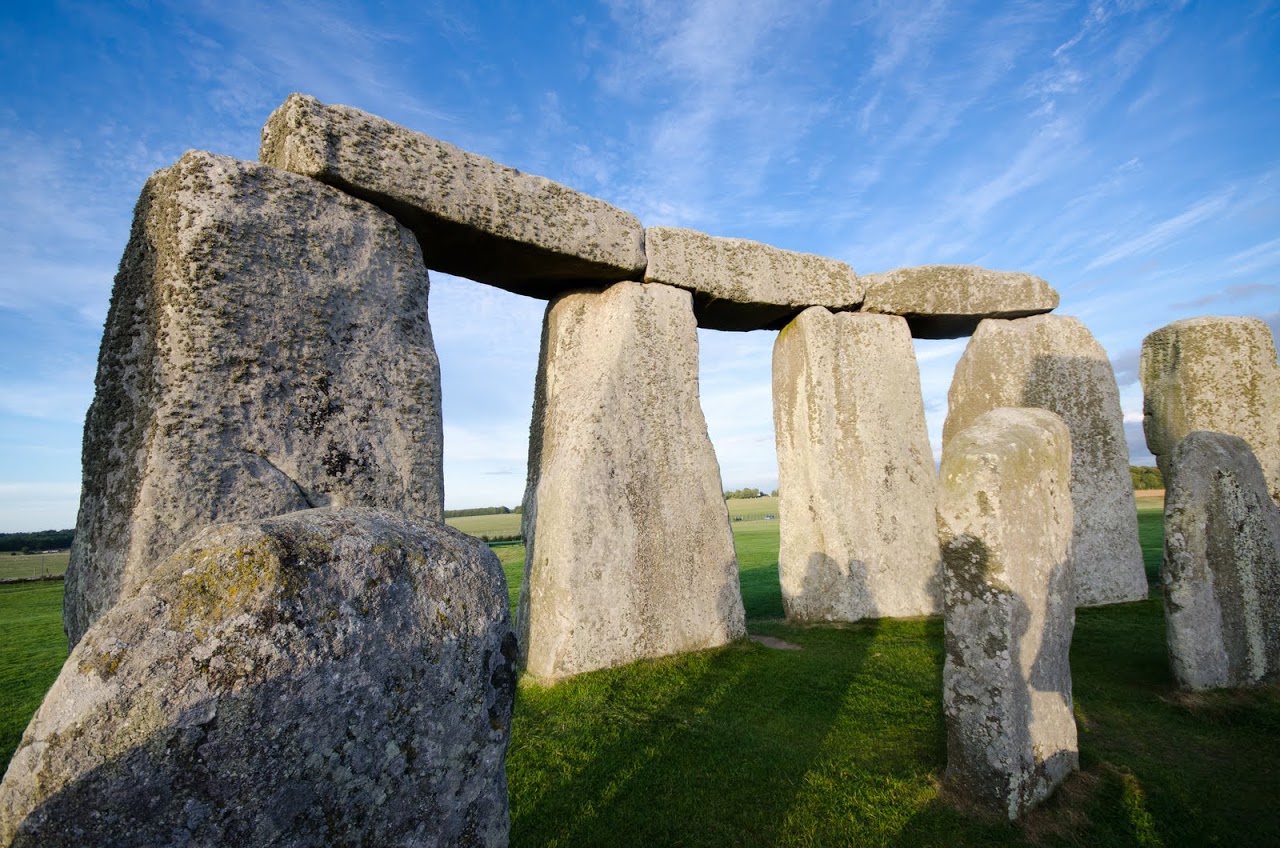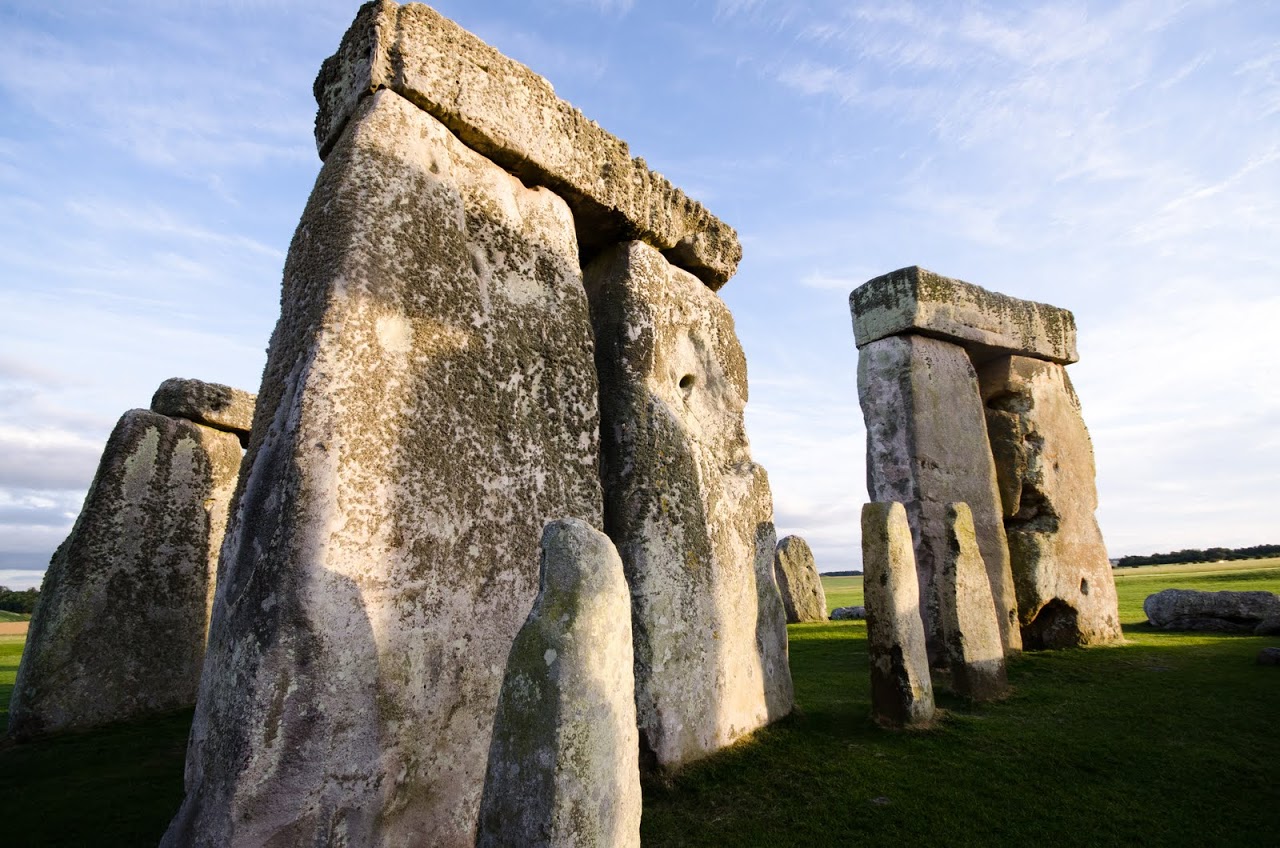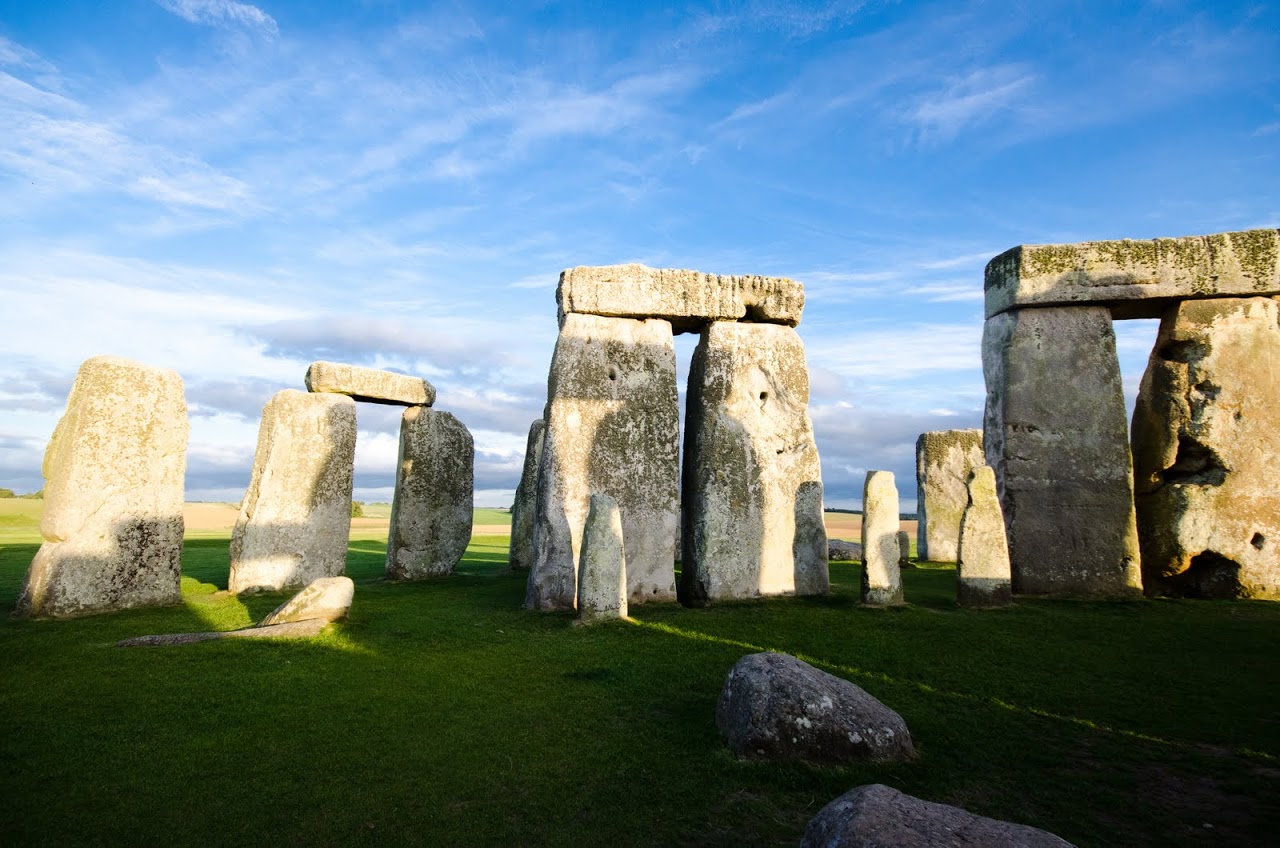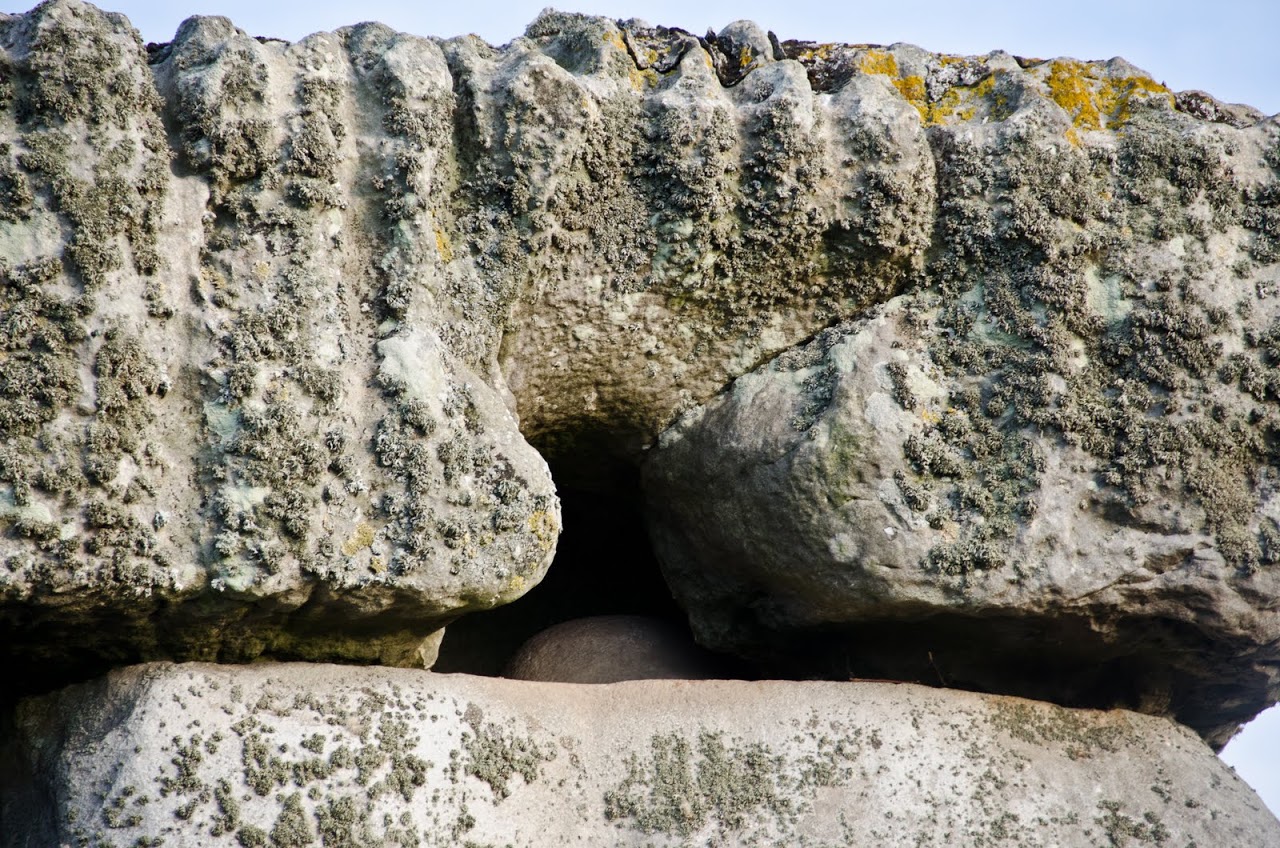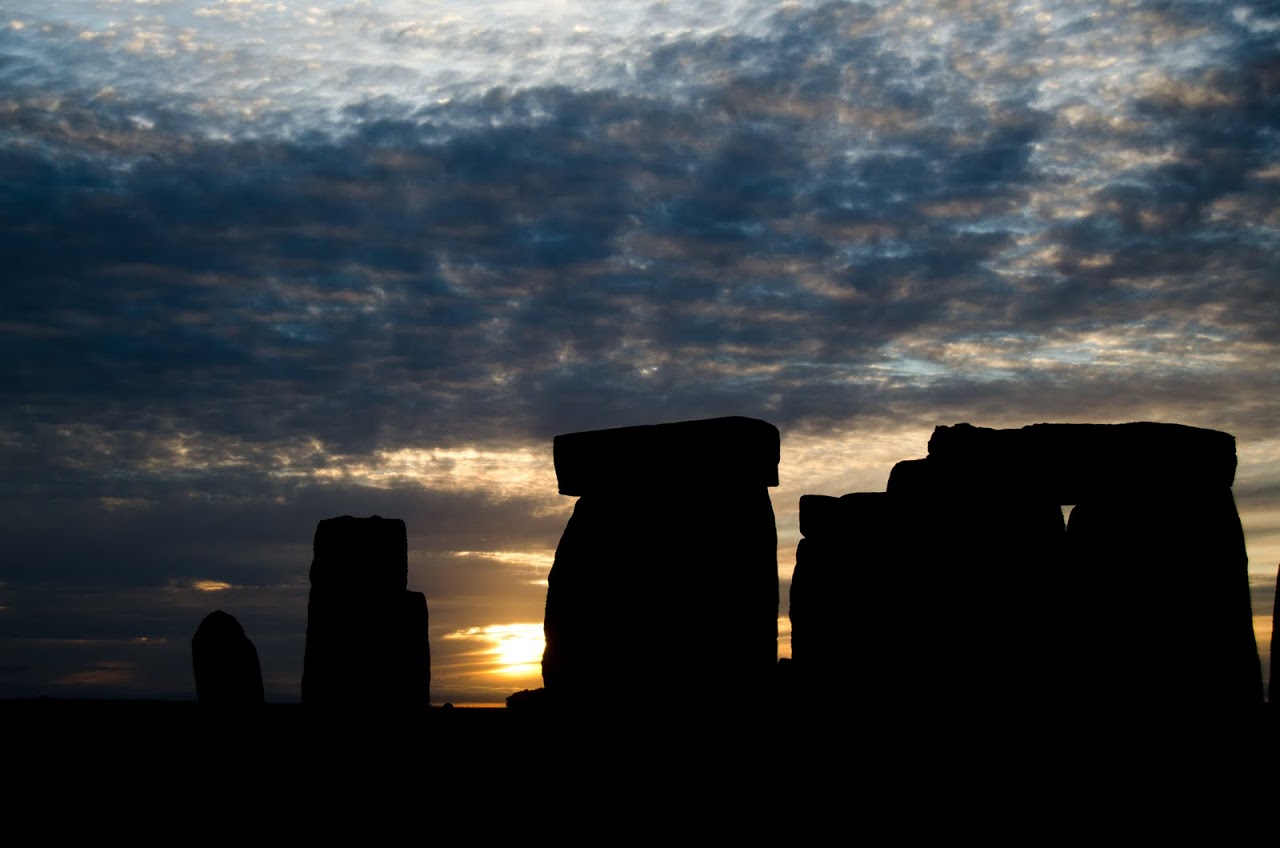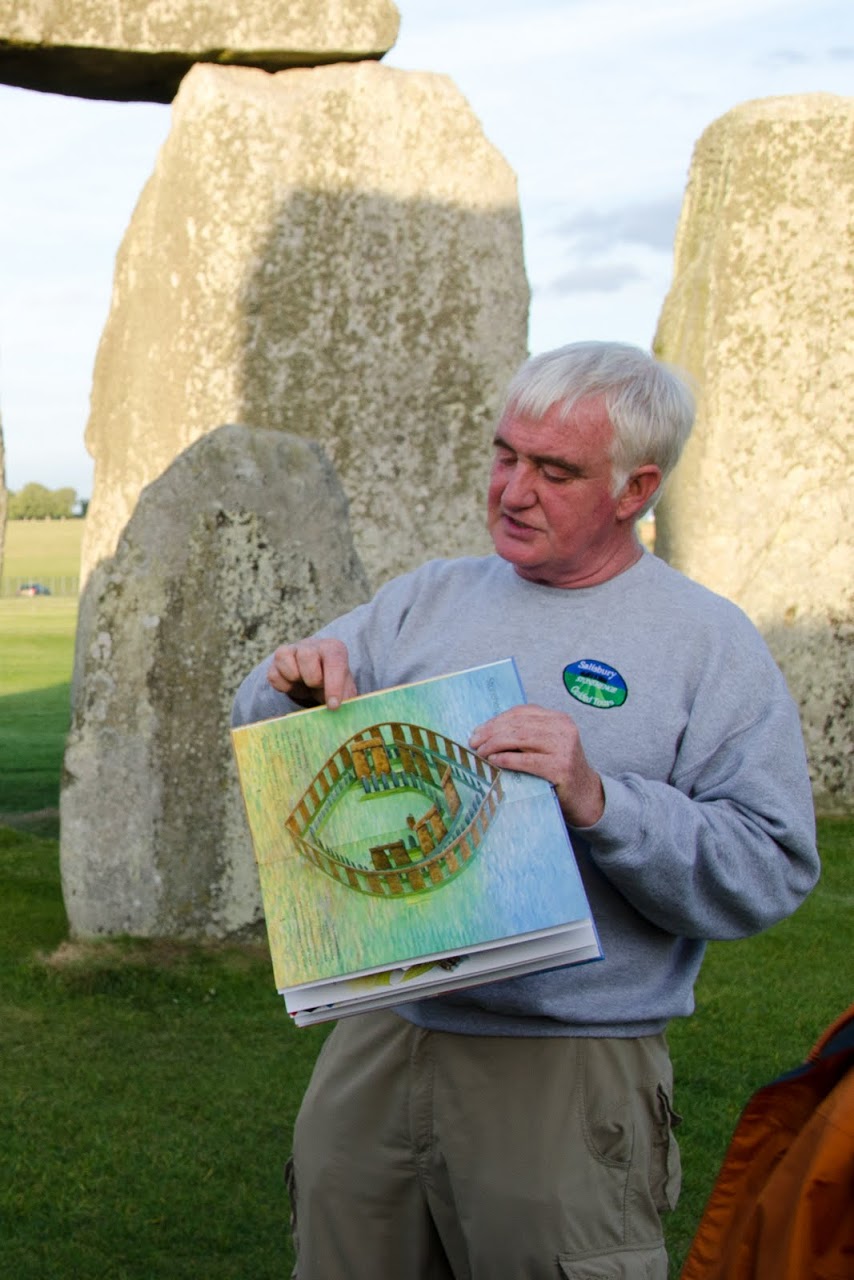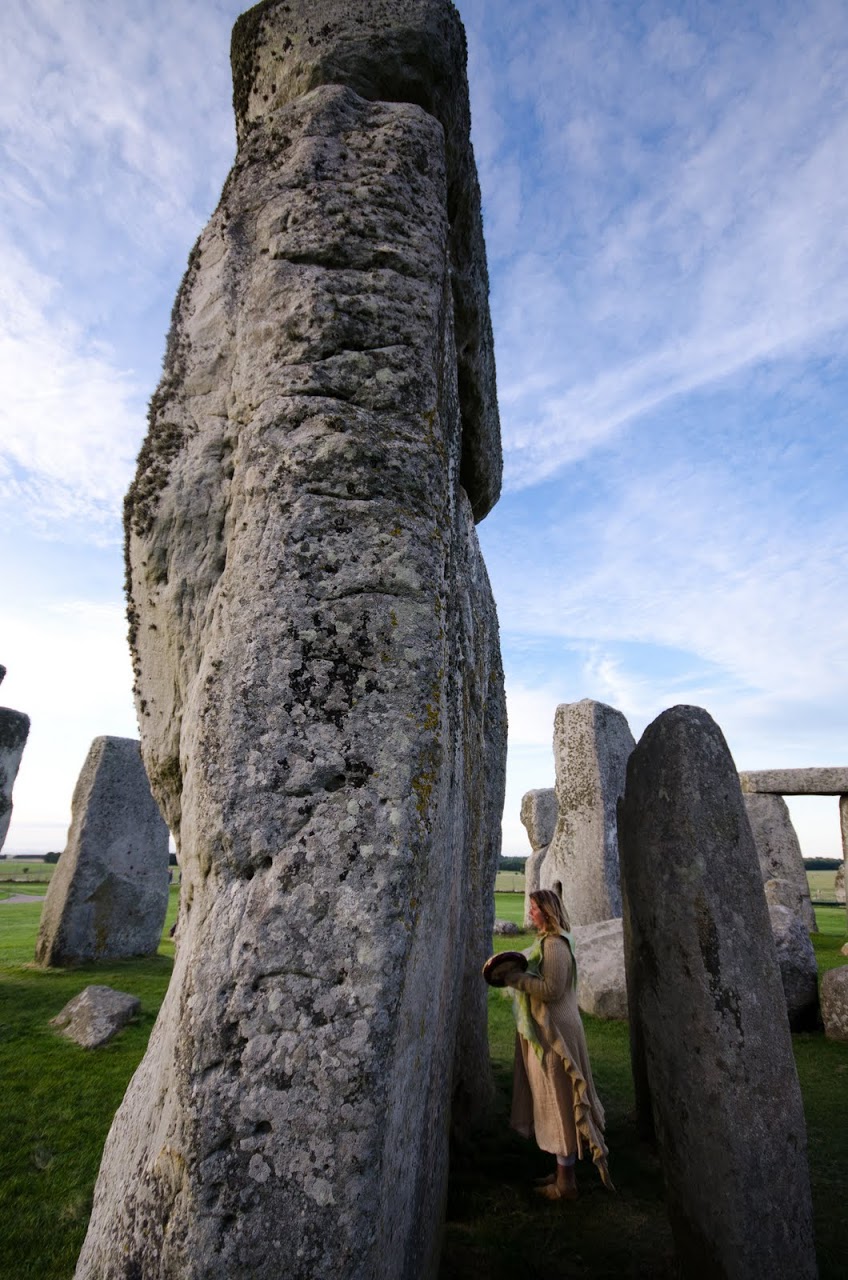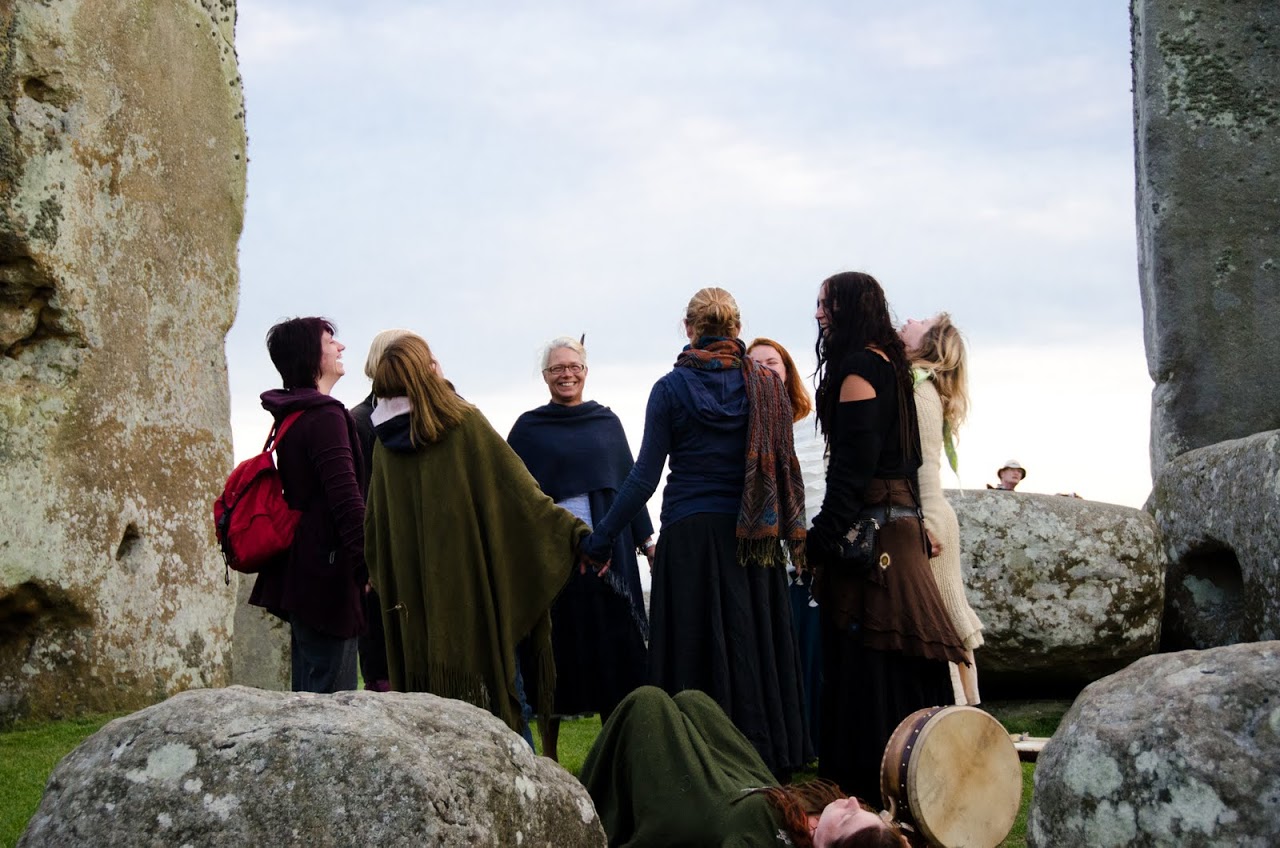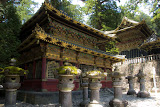Stonehenge
We go zooming by Salisbury and pass Stonehenge on the A303. From afar, it is a pile of rocks set in a vast green lawn; an impressive pile of rocks, perhaps, but a pile of rocks nonetheless. And, it would be easy to undermine the importance of these monuments --- to assume that they are the works of aliens or Druids, as so many have argued. Instead, what we discovered in our Stonehenge Special Access tour is that this monument is amongst man's greatest Prehistoric achievement.
Marking at the parking lot of 8000 BC posthole
But, I'm getting ahead of myself. First, we have to understand the time period in which these monuments were built. Around 8,000 BC, as the early humans discovered agriculture and farming, they dug five huge mastholes near what would later be Stonehenge. Today, the Stonehenge parking lot covers the location of those mastholes and the only indication that prehistoric activity once took place at that spot is a round white circle which could very well be confused with a roundabout marker.
Burial tomb at center of woodhenge
In 5,000 years, the early human civilizations advanced and developed. They became nomads, conquerers, architects and sculptors. They developed communities oriented around farming and hunting, domesticators of ancient cows and buffalo, and wandered far across the earth to gather materials and equipment to celebrate their faiths and beliefs. And, it is around this time that the prehistoric humans in England discovered the circle. Just as the ancient Egyptian monuments were mostly triangular and pyramidal, the henges are primarily circular or oval.
Durrington Walls
So, what is a henge? A henge is identified by a circular ditch with an internal bank, with or without monuments in the center. There are hundreds of henges scattered across England but the most famous are the ones in the Salisbury area. Durrington Walls (above) is the largest henge in England and though it looks like little more than a big grassy field to our untrained eye, our guide Pat showed us how the "valley" is the ditch in the henge and the far "hill" is the bank.
Woodhenge
The ditch and bank are more obvious at Woodhenge, a smaller henge built around 2,600 BC, which contained large wooden posts of differing widths and heights and a burial mound in the center.
Walking up to Stonehenge
via the Stonehenge Avenue
Woodhenge and Durrington Walls are both near the River Avon and, from there, the ancient man walked down the three kilometer Stonehenge Avenue, at first seeing nothing, until Stonehenge rises from behind a hill in the distance.
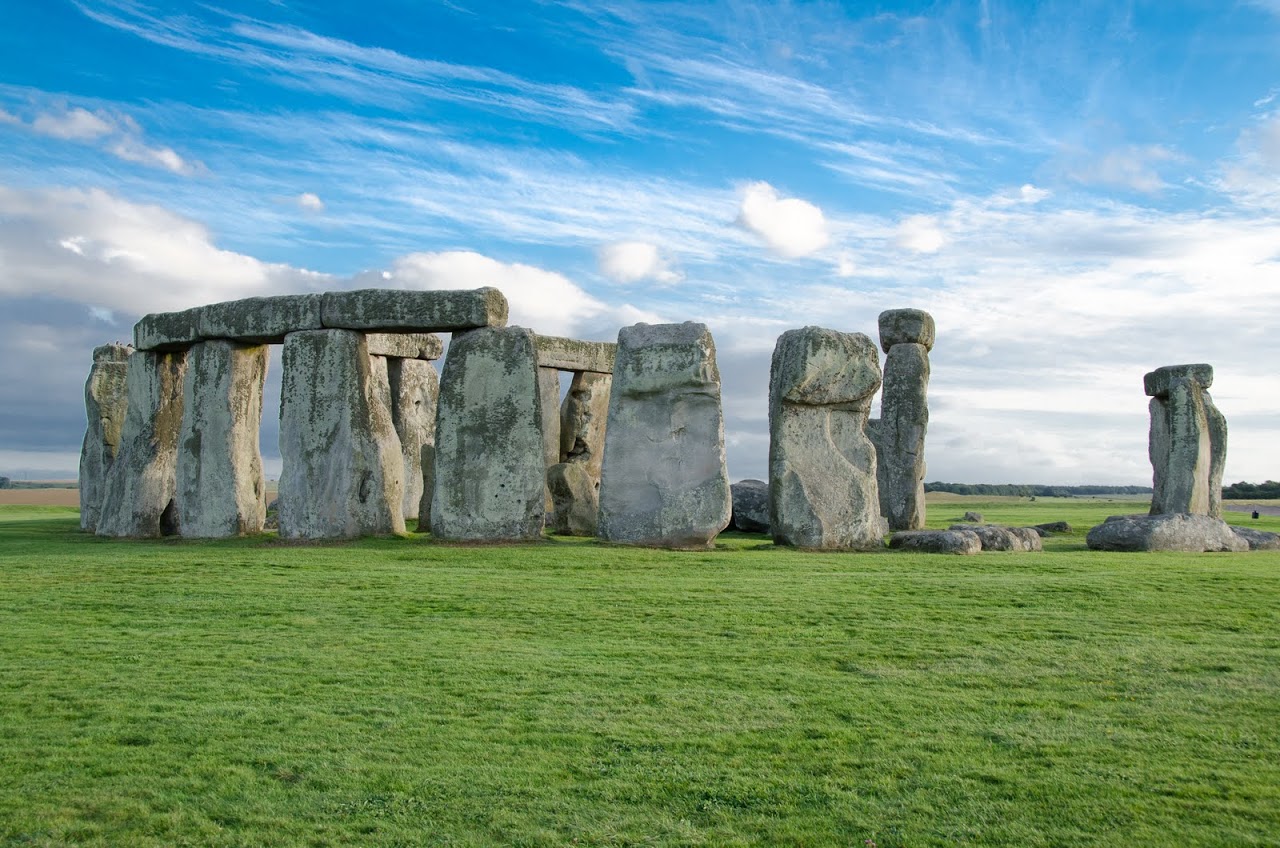
Stonehenge (in the top picture you can easily see the bank and ditch surrounding the henge)
I can quote you the statistics: the stones weigh about four tons each, the entrance exactly matches the location of the midsummer sunrise and midwinter sunset of that period, and the stones were brought from modern-day Wales --- a feat that modern man is unable to recreate using the tools of that time.
Entrance to Stonehenge
Ultimately, though, as we passed through the entrance of Stonehenge on our special tour, we could only stand awestruck at the enormity of these stones and the near perfect circle they created.
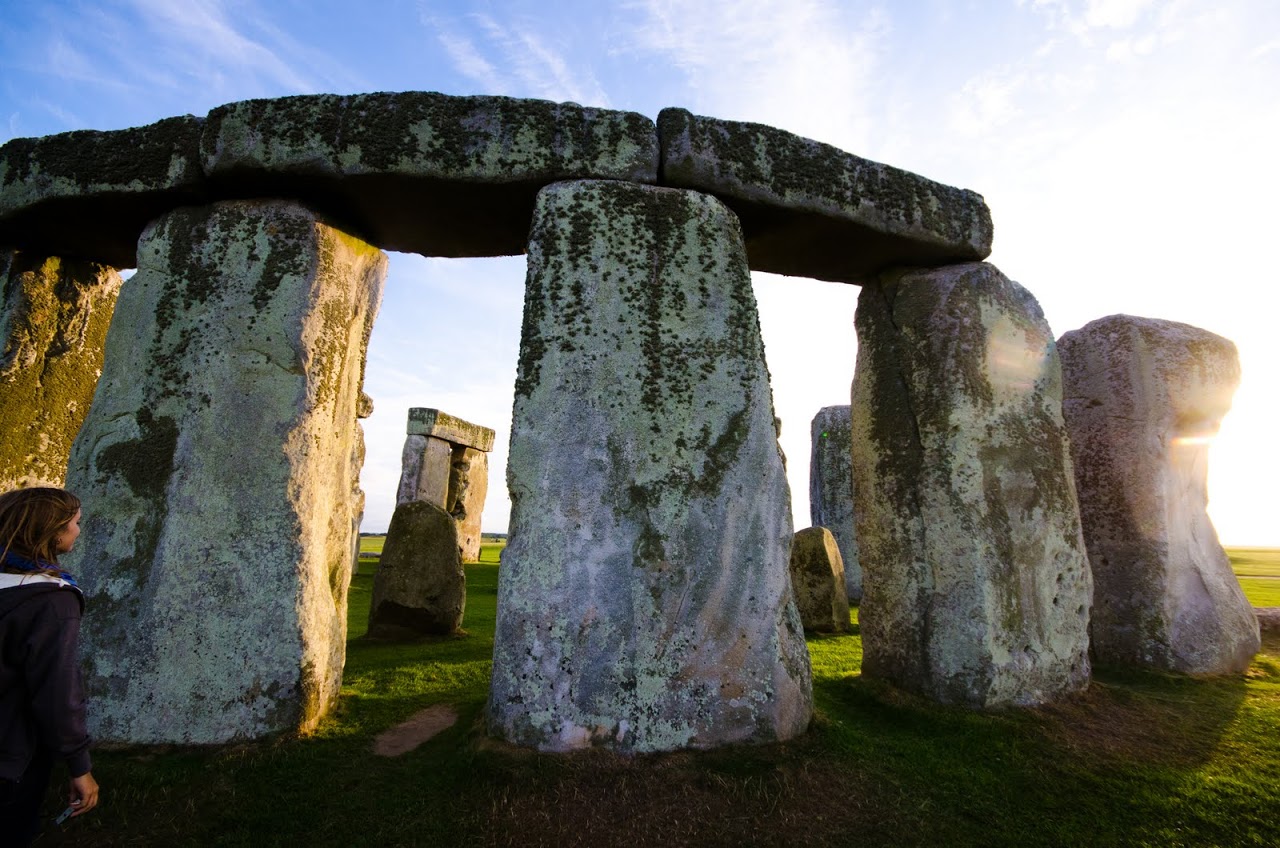
|
|
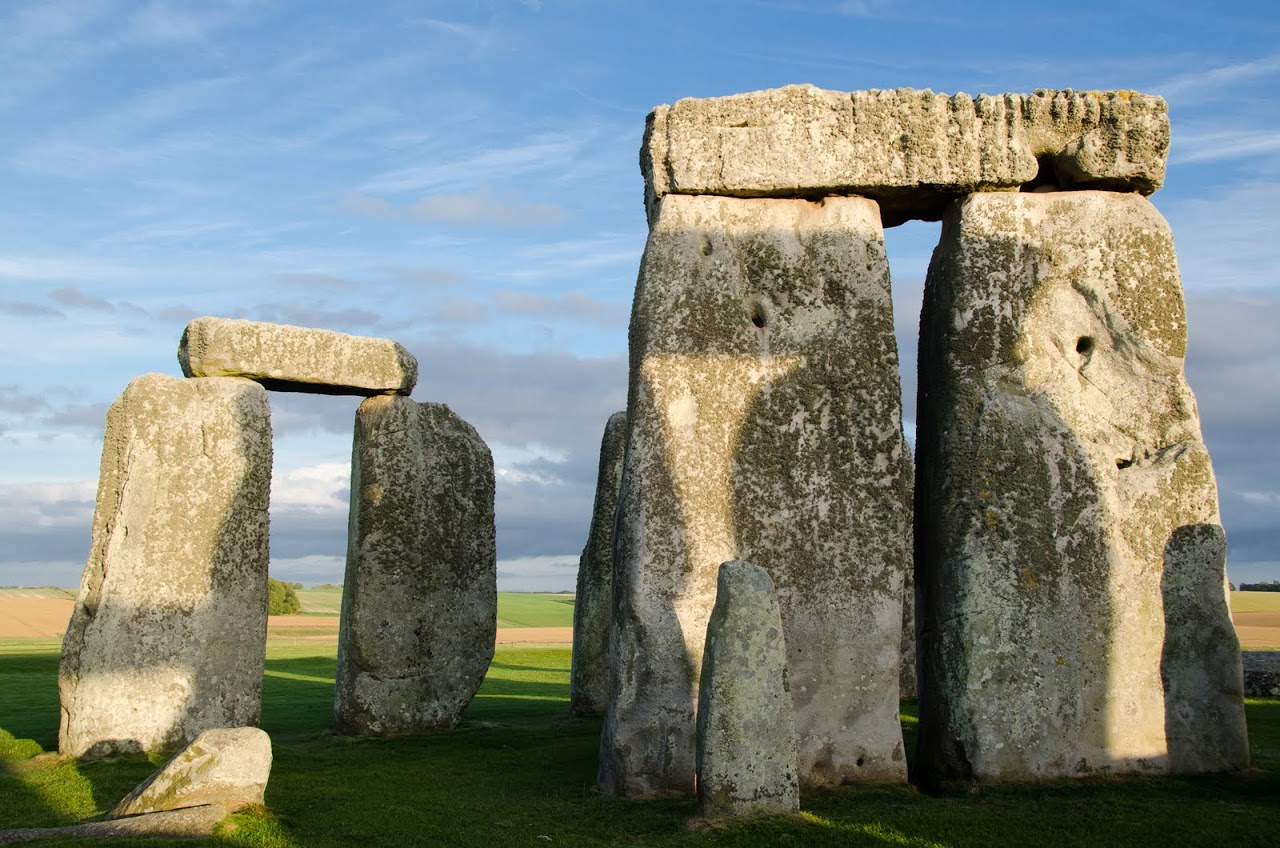
|
Inside Stonehenge
The exterior circle --- what most visitors to Stonehenge easily see --- consist of huge four-ton-stones spread evenly around a circle. The standing stones are ingeniously joined to top stones which, at one point, created a complete ring (or so archaeologists think).
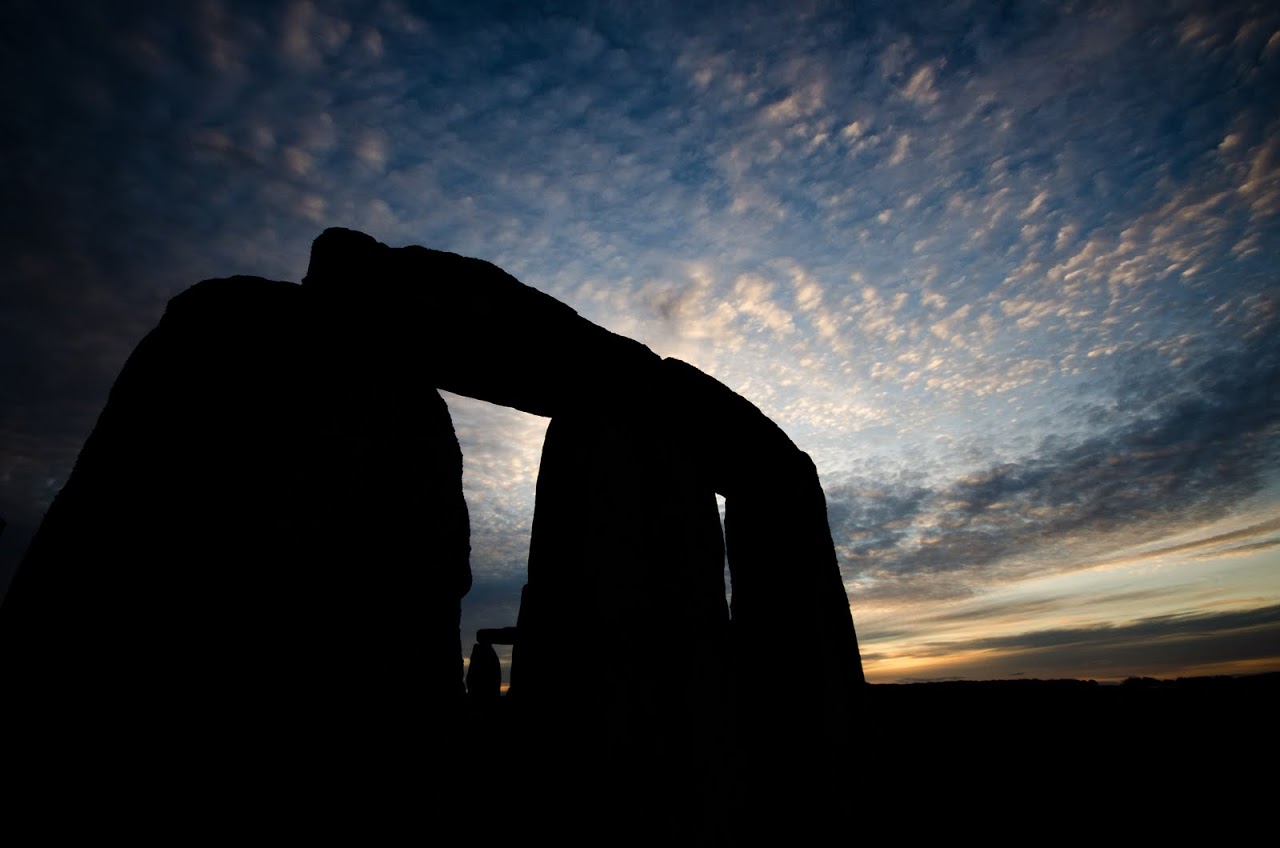
|
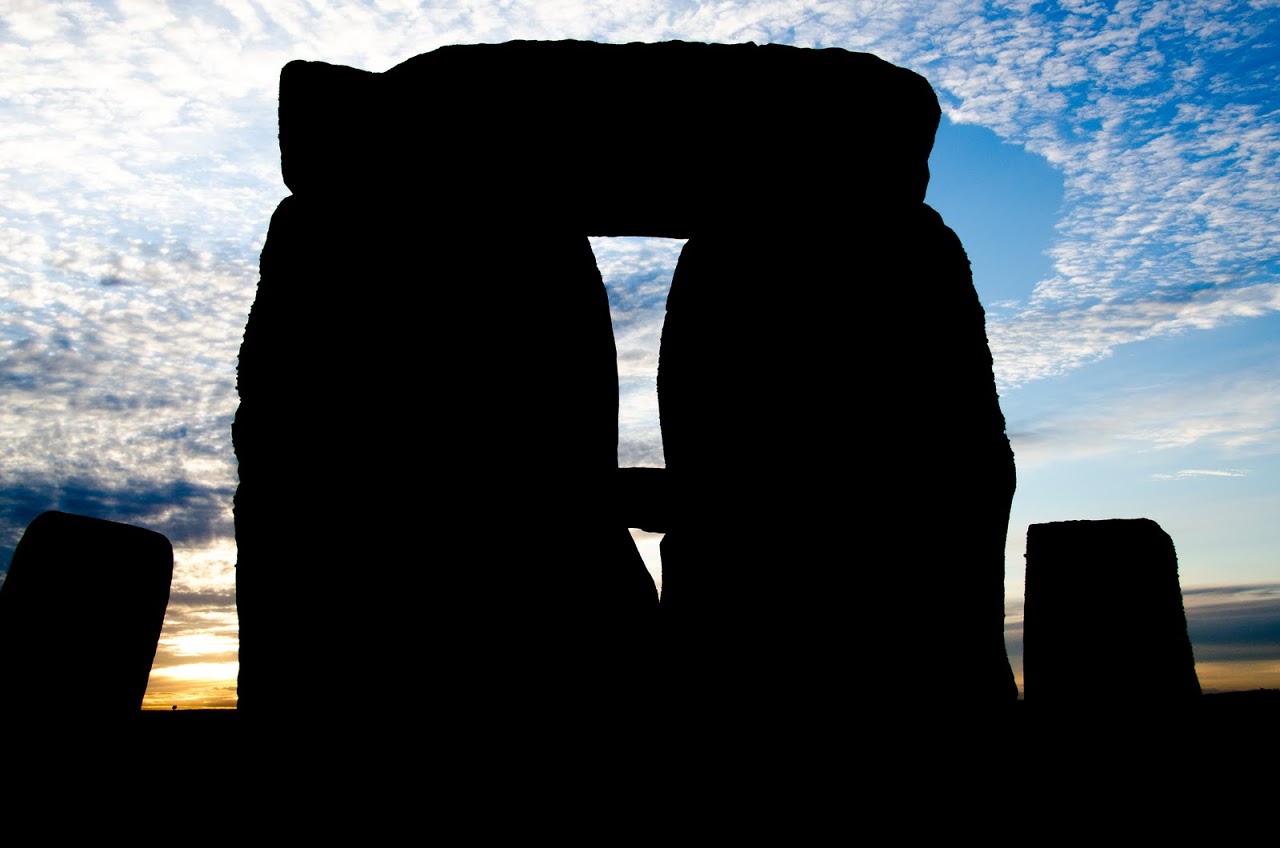
|

|

|

|
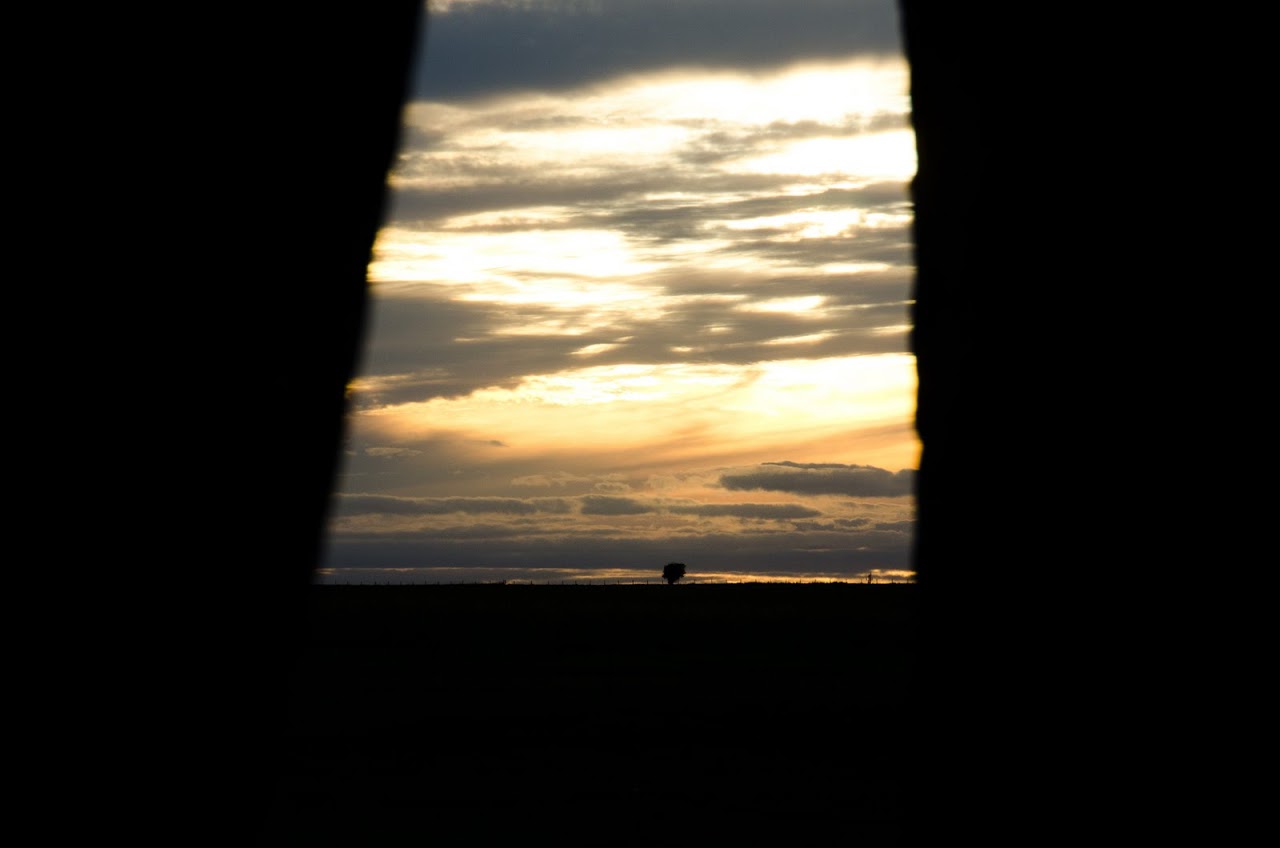
|

Stonehenge as night falls
But, ultimately, as night fell over Stonehenge and we stood within the monument, we forgot that for 10,000 years, this had been a place of worship, celebration, and ceremony. We forgot that after the 2nd century BC, it was abandoned and neglected, until archaeologists began enthusiastic excavations in the 19th century.
Stonehenge at night
As the sun set and the stones stood in stark relief against the blue and yellow sky, I kept repeating the same thought: this place is magical.
Details
Pat from Stonehenge Special Access tour; the Druids?witches? doing a laughing exercise
Pat Shelley, our guide on our Stonehenge Special Access tour, has a passion for Stonehenge and brings a dusty pile of rocks alive, until we could almost see the prehistoric men walking about the Salisbury monuments. Aside from all that, going inside Stonehenge without any tourists about is an absolutely remarkable experience. His tours cost around 85 pounds per person, which certainly isn't cheap, but his tour is absolutely worth every pence. Only twenty people are allowed inside Stonehenge every evening. On the day we toured Stonehenge, aside from our tour, there was a private tour group and a very odd bunch of Druids?witches? who stood in the middle of the Stonehenge circle and cackled extremely loudly for about five minutes straight. (Yes, it absolutely freaked me out.)
If you're in southern England, book Pat's tour . You won't regret it.









